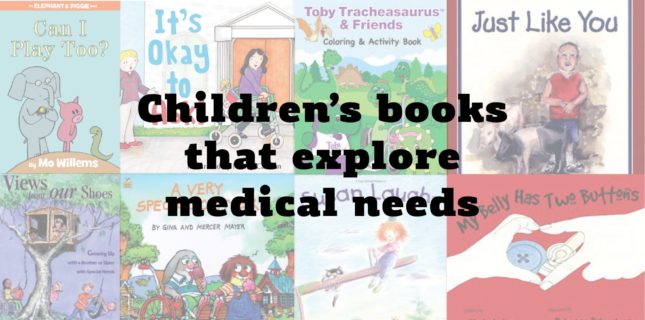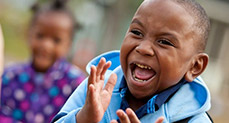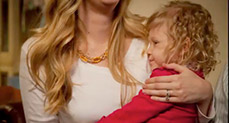Children’s Books That Start a Conversation About Special Needs

Encouraging children to be accepting of people with different needs and abilities is an important but sometimes difficult lesson to teach. As they get older and start to notice those around them more, they might start to recognize when a child has some different accessories (like a cool wheelchair or a trach on their neck), behaviors, or ways of eating, breathing, and moving – and there can be so many benefits to opening up the conversation about these differences when they’re noticed.
For the parent of a child with medical complexities, finding good resources to educate children on their son or daughter’s unique needs and equipment is a good way to help de-mystify differences and create an environment of understanding and acceptance.
We’ve found some children’s books that explain medical complexities and special needs in a way that kids will be able to grasp, and can be the starting point in a conversation for classmates, siblings, medically complex kids, or curious minds. You can find these books online, or check your local bookstore.
Are there any children’s books you’ve found helpful when trying to teach others or help your child understand a friend’s condition? Share them in the comments!
Why Johnny Doesn’t Flap by Clay Morton & Gail Morton
This clever children’s book that turns the narrative on common depictions of social behaviors. Through the mind of a narrator who is autistic, readers can learn why he thinks his friend Johnny, who is neurotypical, is so strange.
A Very Special Critter by Gina and Mercer Mayer
From the beloved Little Critter series, this book tells the story of Little Critter discovering that although the new boy in class is in a wheelchair, he isn’t so different from his other classmates.
Can I Play Too? By Mo Willems
Piggie the pig and Gerald the elephant are playing catch, and a new snake friend wants to join in the game, but doesn’t have arms – read as they try to figure out how to include everybody in a game of catch, with some laughs and creative problem solving along the way.
Susan Laughs by Jeanne Willis
This book follows Susan through a number of activities that are familiar to children – swimming, going to school, playing with friends, and riding a horse. It describes her as a child who gets happy, sad, good, bad (as you can see, the book is done as a rhyme), and at the very end of the book, explains that Susan uses a wheelchair. This story does an amazing job of showing something like a wheelchair being of little importance compared to a person’s likes, dislikes, personality, and emotions.
It’s Okay to Ask! by Gillette Children’s Specialty Healthcare
This book, which we also love since it’s from Gillette, is part of their CurePity movement and introduces readers to five children with disabilities or complex medical conditions. They love to do the same things as their peers, and the reader will learn that they have a lot in common with these five kids and that it’s okay to ask questions.
Just Like You by Emily Dunafin
Meet Slade’s mom, brother, sister, and some of the animals on his farm – and learn about his trach, too. Readers will join this little boy and his mom as they go to school to explain his trach to classmates. This book does a great job of answering common questions in a way that’s easy for kids to understand, and also does a great job of showing the classmates that despite his trach, he’s just like the rest of them.
Views from Our Shoes by Donald Joseph Meyer
This is a great book to read to siblings of children with medical complexities – it is a variety of essays from children ages 4-18, and talks about being a brother or sister to siblings with autism, cerebral palsy, developmental delays, hydrocephalus, visual and hearing impairments, and more. The tales told can help siblings realize there are others in similar shoes, and help them understand that their feelings might be completely normal.
My Belly has Two Buttons by Meikele Lee
Introduce your child to Nico, a little boy who has a belly button and a second button – for his feeding tube. Nico explains everything his Mic Key button does for him, and the fact that it helps him get the nutrition he needs but it’s something that cannot be played with – an important reminder for children.
Toby Tracheasaurus & Friends
Help explain how cool trachs are with this activity book that features trached dinosaurs. This is a resource for children with Passy-Muir valves, but in our opinion, is also a great opportunity to let classmates and friends get creative with their coloring and activities while also getting used to seeing a trach – whether it’s on a large animal or a peer.
Originally published: September 9, 2016

